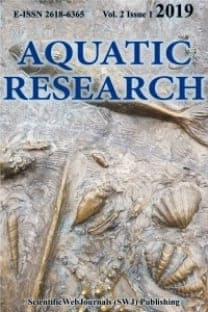A CONTEMPORARY ANALYSIS ON FISH FARMS AND THE SAFETY OF NAVIGATION
Areas where fish farms are located and are not usually far from the shore pose a risk to maritime safety. In this regard, the issue has two important aspects: first, navigational hazards on the approach to and proximity to fish farms, such as rocky, shallow, narrow passages, areas with intensive local traffic that are challenging the safety of navigation; the second is the need for a pilot and tugboat (s) for docking or undocking manoeuvres to fish farms with a berth. The offshore aquaculture has made a great leap forward since 2007, but with this development, important issues such as ecosystem conservation, sustainability of seafood, preventing marine transportation related accidents and due measures which should be put into effect gained importance as well. The cultured fish which harvested from cages usually being transported to the processing facilities and customs control locations by vessels. The maritime accidents that may occur during this transportation period have the capacity to harm both the farms and the the ecosystem significantly. As a method for this article, the safety needs of the vessels serving to the fish farms in the cargo transfers are determined, and after this determination, conclusions on how this need can be resolved by use of pilotage and towage services are put forward.
___
Anonymus (2017a). Ministry of Food, Agriculture and Livestock Fishery Statistics (2017). https://www.tarim.gov.tr/sgb/Belgeler/SagMenuVeriler/BSGM.pdf (accessed 25.11.17)Anonymus (2017b). Lady Tuna. https://www.marinetraffic.com/tr/ais/details/ships/374762000 (accessed 17.11.17)
Anonymus (2017c). Çeşme kıyılarından M/V Lady Tuna'dan sızan petrol temizleniyor. http://www.kaptanhaber.com/cesme-kiyilarindan-mv-lady-tunadan-sizan-petrol-temizleniyor/45065/ (accessed 25.11.17)
Anonymus (2017d). Helping to Prevent Accidents at Scottish Fish Farms–Fishuptade.com https://www.fishupdate.com/helping-to-prevent-accidents-at-scottish-fish-farms-fishupdate-com/ (accessed 15.11.17)
Ece, J.N. (2016). Kılavuzluk Hizmetlerinin Deniz Emniyetine Katkısı: İstanbul Boğazı’nda Kazaya Karışan Gemiler İle Kılavuz Kaptan Almaları Arasındaki İlişkinin Analizi. Journal of ETA Maritime Science, 4(1), 3-21.
Erkan, N., Özden, Ö. (2007). Proximate Composition and Mineral Contents in Aqua Cultured Sea Bass (Dicentrarchus labrax), Sea Bream (Sparus aurata) Anaylzed by ICP-MS. Food Chemistry, 102, 721-725.
Erkan, N. (2013). Türkiye’de Tüketilen Su Ürünlerinin Omega-3 (ω-3) Yağ Asidi Profilinin Değerlendirilmesi. Journal of FisheriesSciences.com, 78(2), 194-208.
FAO (2016). The State of World Fisheries and Aquaculture 2016, 200 pp. Rome, ISBN 978-92-5-109185-2
Hsu, W-K.K. (2012). Ports’ Service Attributes for Ship Navigation Safety. Safety Science, 50, 244-252.
İstikbal, C. (2007). Denizde Risk Nedir, Nasıl Değerlendirilir? http://www.denizgazete.com/yazarlar/cahitistikbal/denizde-risk-nedir-nasil-degerlendirilir/100163/ (accessed 10.11.17) İstikbal, C. (2016). Turkish Straits: Difficulties and Role of Pilotage. http://www.seanews.com.tr/news/160485/TurkishStraits-Difficulties-and-Role-of-Pilotage.html (accessed 10.11.17)
Rabanal, H. (1988). History of Aquaculture. ASEAN/UNDP/FAO Regional Small-Scale Coastal Fisheries Development Project Manila, Philippines, http://www.fao.org/3/a-ag158e.pdf (accessed 10.11.17)
Wang, J. (2006). Maritime Risk Assessment and its Current Status. Quality and Reliability Engineering International, 22, 3-19.
Wu, B., Yan, X., Wang, Y., Guedes Soares, C. (2017). An Evidential Reasoning-Based CREAM to Human Reliability Analysis in Maritime Accident Process. Risk Analysis, 37(10), 1936-1957.
Zhang, J., Teixeira, A.P., Guedes Soares, C., Yan, X., Liu, K. (2016). Maritime Transportation Risk Assessment of Tianjin Port with Bayesian Belief Networks. Risk Analysis, 36(6), 1171-1187.
- ISSN: 2618-6365
- Yayın Aralığı: Yılda 4 Sayı
- Başlangıç: 2018
- Yayıncı: ScientificWebJournals (SWJ) Özkan Özden
Sayıdaki Diğer Makaleler
A CONTEMPORARY ANALYSIS ON FISH FARMS AND THE SAFETY OF NAVIGATION
Süleyman ÖZDEMİR, Hilal SÖYLEYİCİ, Zekiye Birinci ÖZDEMİR, Uğur ÖZSANDIKÇI, Ferhat BÜYÜKDEVECİ
MURAT YİĞİT, Michael OSİENSKİ, Judson DECEW, Barbaros ÇELİKKOL, OSMAN SABRİ KESBİÇ, Mustafa KARGA, ÜMİT ACAR, Evrim KURTAY, Barış ÖZALP, Musa BULUT, Ümüt YİĞİT, Nic TAYLOR, Robert L. DWYER
Clementain C. ZVAVAHERA, Vimbai R. HAMANDİSHE, Petronella T. SAİDİ, Venancio E. IMBAYARWO-CHİKOSİ, Tamuka NHİWATİWA
